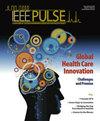基因编辑巨轮正在加速前进。
IF 0.2
4区 医学
Q4 ENGINEERING, BIOMEDICAL
引用次数: 0
摘要
CRISPR-Cas9 是一种通过精确切割 DNA 并让人体的自然 DNA 修复过程接管来编辑基因的工具,它的先驱埃马纽埃尔-夏彭蒂耶和詹妮弗-杜德娜在 2020 年当之无愧地获得了诺贝尔奖。自从他们在 2012 年取得突破以来,这项技术取得了突飞猛进的发展,曾经只属于科幻小说领域的基因操作技术正逐渐成为科学 "事实"。本文章由计算机程序翻译,如有差异,请以英文原文为准。
The Gene Editing Juggernaut is Picking Up Speed.
CRISPR-Cas9, the tool for editing genes by precisely cutting DNA and letting the body's natural DNA repair processes take over, deservedly led to Nobel prizes in 2020 for its pioneers, Emmanuelle Charpentier and Jennifer Doudna. Since their breakthroughs in 2012, the technology has moved forward in leaps and bounds, and techniques to manipulate genes that were once the realm of science fiction are becoming very much science "fact."
求助全文
通过发布文献求助,成功后即可免费获取论文全文。
去求助
来源期刊

IEEE Pulse
ENGINEERING, BIOMEDICAL-
CiteScore
1.10
自引率
0.00%
发文量
88
审稿时长
6-12 weeks
期刊介绍:
IEEE Pulse covers both general and technical articles on current technologies and methods used in biomedical and clinical engineering; societal implications of medical technologies; current news items; book reviews; patent descriptions; and correspondence. Special interest departments, students, law, clinical engineering, ethics, new products, society news, historical features and government.
 求助内容:
求助内容: 应助结果提醒方式:
应助结果提醒方式:


